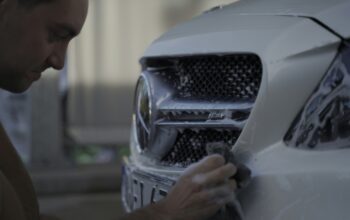Uzone.id – Europe, despite its rich automotive history, has some of the strictest regulations when it comes to car tuning. However, the desire for personalization is still very much alive. These regulations are primarily focused on ensuring safety, security, and environmental standards.
“Vehicle modification regulations in Europe aim to balance the desire of individuals to personalize their vehicles with the interests of traffic safety and security. Any changes made to a vehicle must go through a homologation process to ensure it continues to meet the standards set,” said EU Land Transport Director General, Hans Muller.
While the rules are stringent, certain modifications are still permitted. So, what kind of changes can you make? Let’s take a closer look at what’s allowed under these guidelines.
- Minor Aesthetic Modifications
Aesthetic modifications usually include replacing rims, adding body kits, and changing colors by painting. Replacing rims with a different size and design is generally allowed, as long as they meet safety standards and do not interfere with brake performance.
If modifiers want to add body kits, such as spoilers or side skirts, they are usually permitted. However, it must not impair driver visibility or significantly alter the dimensions of the vehicle.
Changing the vehicle’s paint color, whether entirely or partially, is also permitted in Europe, though it must still comply with local traffic laws.
- Limited Performance Upgrades
Performance upgrades are also allowed in Europe, but what can be changed is very limited. Replacing the peripheral or shock absorber with an aftermarket product is often permitted, but care must be taken not to compromise the stability of the vehicle.
Changing the exhaust is also allowed in Europe, with stainless steel or titanium usually allowed. However, the sound produced must not exceed the set limits.
- Interior Modifications
For interior modifications, swapping out seats for sportier models or upgrading to leather is generally allowed, as is installing a more advanced audio system. However, these changes must not distract the driver or compromise safety.

Now that we’ve covered what modifications are permitted in Europe, let’s dive into what’s off-limits.
- Modifications that Significantly Change Vehicle Specifications
As mentioned earlier, performance modifications are restricted to the leg and exhaust sectors only. So changing the engine capacity or fuel type without official permission is strictly prohibited.
Likewise, cutting or extending the chassis is not allowed because it can jeopardize the stability of the vehicle and violate traffic regulations.
- Modifications that Reduce Safety
Naturally, car modifications in Europe are strictly prohibited if they compromise driving safety. For example, altering the brake system without proper expertise can significantly reduce braking performance, posing a danger.
Similarly, modifying the headlights or taillights is also not allowed if they don’t meet safety standards, as improper lighting can put other road users at risk.
- Modifications that Pollute the Environment
Modifications that cause an increase in exhaust emissions will violate environmental regulations. This goes hand in hand with changing engine specifications or fuel type. As engine and fuel specifications change, exhaust emissions will not comply with existing regulations.
“Modifications that change the basic structure of the vehicle, such as the chassis or suspension system, can have a significant impact on the stability and handling of the vehicle. Therefore, these types of modifications should be done with great care and expert supervision,” argued an Automotive Engineering Expert at the University of Munich, Professor Dr. Maria Sanchez.
To ensure that your vehicle modifications are legal and safe, certification is generally required from an authorized workshop or related institution. This process involves an inspection of the modifications that have been made to ensure that the vehicle still meets safety and environmental standards.
While there is a general outline, vehicle modification regulations vary from European country to country. Some countries have stricter regulations than others. Therefore, before making modifications, it is very important to learn about the regulations that apply in the country where you live.
If you are a car enthusiast who wants to personalize your car, there are some tips you should know. Start by consulting an expert regarding your interest in modifying your car. Consult a specialist workshop or automotive club to get accurate information. Also, make sure that the modifications you plan to make are following the traffic regulations in your area.
Don’t forget to document all changes to the car. Keep all modification-related documents, such as invoices and certificates, for inspection purposes if needed. Finally, always prioritize safety when making vehicle modifications.
Vehicle modifications in Europe provide space for vehicle owners to express themselves, but they must still be done wisely and under applicable regulations. By following the above guidelines, you can enjoy your modified vehicle without breaking the law and stay safe on the road.














